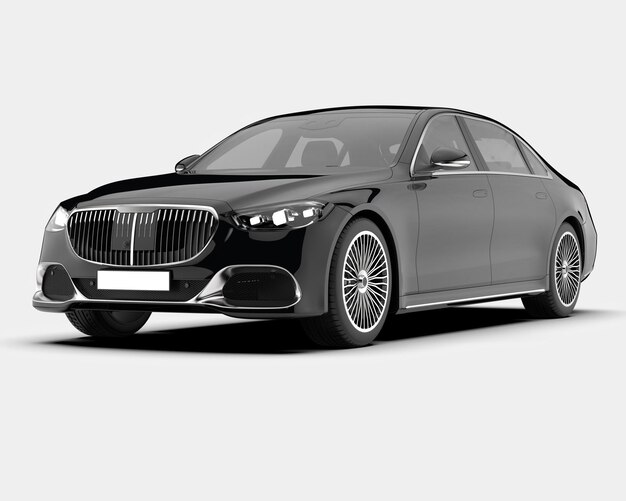
BMW isn’t new to the electric vehicle (EV) world. In fact, they were quick to jump on the electrification trend, offering a range of EVs like the SUV-sized iX and the high-performance i7. Now, the 5-series is joining the lineup with the introduction of the new BMW i5.
The electric 5-series shares many features with its gas-powered siblings, which is great news. The i5 sports a luxurious interior, swift performance, and a stylish design that surpasses some of BMW’s models with oversized kidney grilles.
The 2024 i5 comes in two models: the i5 eDrive40, which is more practical, and the i5 M60, which is more exhilarating (an additional model is set to join in 2025). We’re focusing on the i5 M60, and it might just be BMW’s best EV to date.
The BMW i5 M60 is a visually striking car, representing the best aspects of BMW design in recent years while discarding the less favored elements. Fortunately, BMW avoided the oversized kidney grilles, opting for more understated ones that have been a BMW hallmark for years. On the i5 M60, the grille is a faux design element, but it fits well here.
The car’s front is sleek and elongated, featuring an angled hood and flat nose. It has slim, swooping headlights that complement the narrow taillights. Some design choices, like the grilles, might seem unnecessary on an EV, but overall, fans of the 5-series will appreciate the look.
Inside, the design continues to impress. The interior resembles the i7 but skips the extravagance that made the i7 feel a bit much. You won’t find a 31-inch TV in the back seat of the i5 M60. However, there are still many similarities, including a massive 12.3-inch digital instrument cluster and a 14.9-inch infotainment display. The seats feature high-quality stitched leather, and the steering wheel feels robust.
The BMW i5 M60 exemplifies the best of 5-series design, boasting attractive looks both inside and out.
As mentioned, the BMW i5 includes a large display upfront for instrument monitoring and infotainment purposes. It uses BMW’s iDrive 8.5 infotainment system, which is seeing some meaningful improvements. Nonetheless, I mostly stuck with CarPlay during my test.
Navigating iDrive 8.5 is relatively straightforward. You can place widgets on the home screen to easily access necessary information while driving, and one of these widgets can be a CarPlay window if you prefer not to use CarPlay in full-screen mode. You can also explore a grid of apps, although figuring out which app handles specific functions can be confusing at times.
BMW, like other automakers, has moved climate controls to the screen, which isn’t ideal. Adjusting the temperature is easy enough with buttons at the bottom of the screen, but for more detailed controls, you need to tap the screen multiple times. The screen isn’t the most responsive, so you might have to wait for it to react, which can be frustrating and hazardous. I hope BMW reintroduces some physical controls.
The i5 M60 comes with several driver-assist features, including blind-spot monitoring and emergency braking. BMW’s Highway Assistant, an optional feature, allows the car to drive itself on highways. It seemed to work well, representing a significant advancement as it no longer requires constant hands-on steering.
Driving the BMW i5 M60 is quite the experience. It’s dynamic, responsive, and very fast.
The i5 M60 features two motors generating 593 horsepower, enabling it to go from 0 to 60 miles per hour in just 3.7 seconds. It may not be among the top five fastest EVs, but it’s definitely not slow, and it feels incredibly speedy when pushed to its limits.
The ride is smoother than expected without completely isolating you from the road, which adds to the tactile driving experience. The handling is extremely responsive, making sharp corners a breeze.
The car uses an 81.2-kilowatt-hour battery pack, offering a somewhat underwhelming range of 240 to 256 miles, depending on the configuration. It’s no surprise that the more powerful model has a shorter range, but with certain configurations of the i5 eDrive40, you can achieve up to 295 miles.
Charging speeds reach up to 205kW, which is decent but not outstanding. Many EVs support at least 250kW, with some, like the Kia EV6 and Hyundai Ioniq 5, reaching up to 350kW. At 205kW, the BMW i5 M60 can charge from 10% to 80% in about 30 minutes.
The 2024 BMW i5 M60 is the premium model in the i5 lineup, appealing to those who want a performance car carrying the 5-series legacy. However, the drawback is its shorter range. Some buyers might favor the luxury and style of the i5 M60 but opt for the i5 eDrive40’s practicality and extended range. The i5 eDrive40 remains an excellent vehicle, likely making it the more appealing choice for most people.